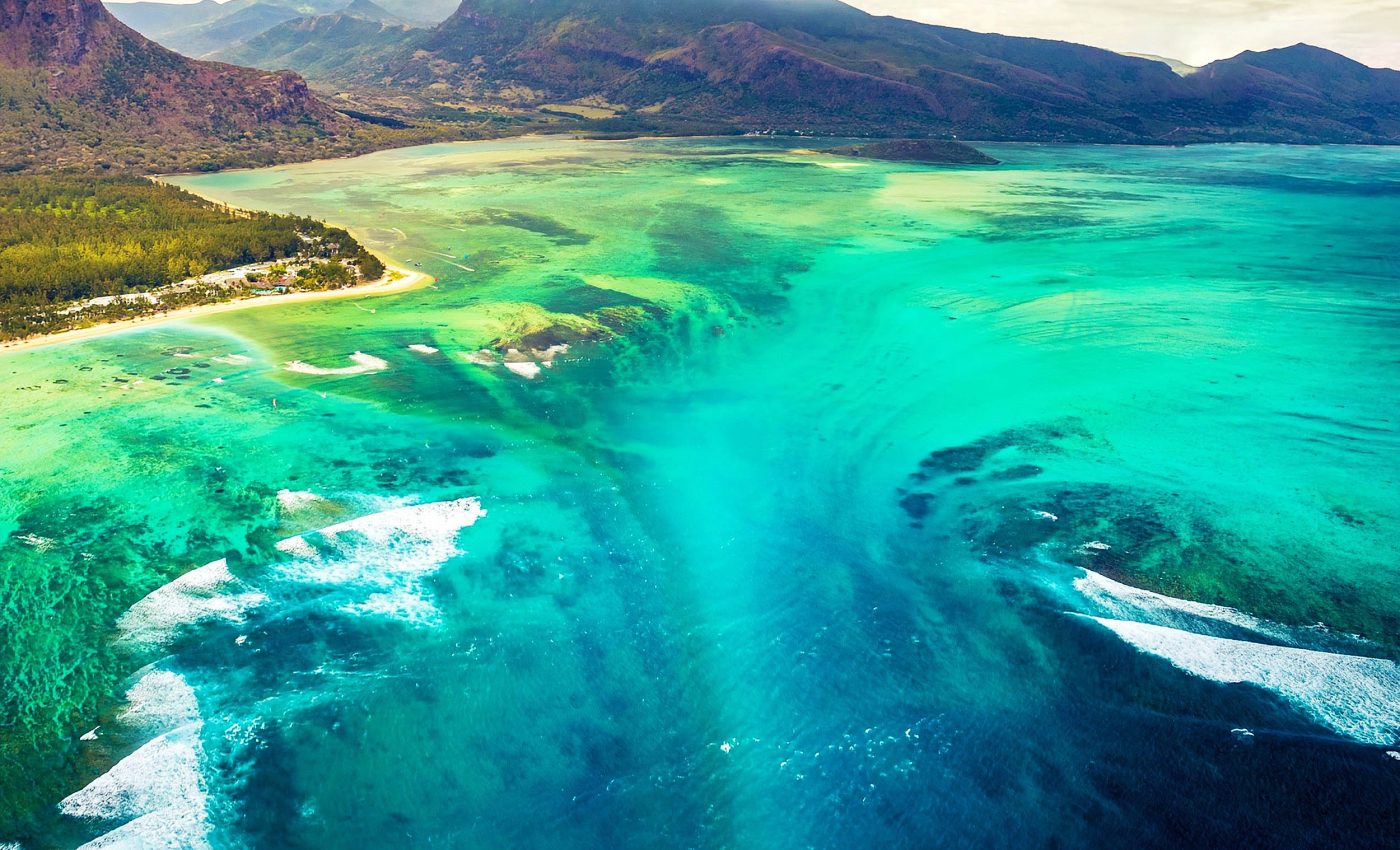
Earth’s largest waterfall, dwarfing all others, is hidden in the ocean
Niagara Falls pulls in tourists by the boatload. Angel Falls towers higher than city skyscrapers. Yet both pale in comparison to Earth’s largest waterfall – an enormous, rushing torrent concealed below Arctic waves.
The Denmark Strait cataract drops in slow motion beneath the chilly surface between Iceland and Greenland.
The chute begins thousands of feet down, rolls over a hidden ledge, and keeps sliding for 11,500 feet.
No roar reaches the surface, no mist fills the air, and passing ships glide on as if nothing remarkable lies below these crucial Arctic waters, which drive Earth’s climate.
The Denmark Strait cataract
Most of Earth’s largest waterfalls form when a river meets a cliff and spills over. Turbulent water gouges the rock, the lip grows steeper, and a postcard scene is born.
Submarine waterfalls follow a different script. Here, colder, saltier water sinks below lighter layers, slipping along the seafloor like syrup down a tilted pan. The motion is silent, pulling entire water masses rather than a single stream.
Oceanographers first confirmed the Denmark Strait cataract decades ago by tracing temperature and salinity profiles through the channel.
Sensors revealed a dense ribbon of Nordic Sea water sliding into the Atlantic basin, gathering speed until it tumbled past a submerged ridge. That ridge acts as the unseen cliff, setting off the tallest plunge on Earth.
Where Arctic chill meets Atlantic warmth
Icy water leaving the Nordic seas is both colder and saltier than the milder Atlantic layer to the south. Density differences created by that contrast drive the flow.
As the dense water reaches the sill between Iceland and Greenland, it spills downward, widening as it falls until the sheet stretches roughly 300 miles – about the driving distance from Chicago to St. Louis.
During the Last Ice Age, roughly 17,500 to 11,500 years ago, glaciers carved trenches across the seabed and left behind the ridge that now serves as the cataract’s tipping point.
Glacial debris, volcanic eruptions, and relentless currents have since hardened the structure, locking a geological funnel in place for the descending water.
Climate change and the largest waterfall
More than 3.2 million cubic meters of water – around 113 million cubic feet – slip over the cataract every second, far outpacing the Amazon River’s flow into the Atlantic.
This slide feeds the lower limb of the Atlantic Meridional Overturning Circulation (AMOC), the global “conveyor belt” that ferries heat, oxygen, and nutrients around the planet.
There is increasing evidence of the effects of global change on the phenomenon of undersea waterfalls.
“A good example is on the Catalan coast, where the decrease in the number of tramontane days in winter in the Gulf of Lion and north of the Catalan coast is causing a weakening of this oceanographic process, which is decisive in regulating the climate and has a great impact on deep ecosystems,” explains marine scientist Anna Sanchez Vidal.
Size of the Denmark Strait cataract
Angel Falls drops 3,212 feet in Venezuela. Niagara clears a modest 167 feet on the U.S.-Canada border. Stack all of Niagara’s water several dozen times, and you still won’t match the cataract’s flow.
Even the Mississippi at flood stage would struggle. Yet the Denmark Strait cataract remains invisible, its roar muffled by more than a half-mile of seawater.
Instruments tell a different story: moored profilers register velocities topping three knots, while sediment cores show layers rearranged by the hidden torrent.
The phenomenon of dense water overflow is particularly intense in the Arctic and Antarctic.

“The poles are the regions where most of the dense water masses – generated by the formation of sea ice at the surface – eventually reach the global ocean floor,” explains David Amblàs of the Department of Earth and Ocean Dynamics at the University of Barcelona.
“The polar areas are like the heart of the oceanic circulatory system: they pump cold, dense water into the great oceanic troughs through the ‘heartbeats’ made by overflows of dense water.”
Much more to learn
The cataract may slow or speed up as Arctic warming alters salinity and temperature patterns. Researchers use autonomous gliders, deep-sea landers, and satellite altimetry to watch for any shift that could ripple through weather systems.
A weakening flow might stall the North Atlantic’s heat pump, cooling Europe and nudging hurricanes onto new tracks.
Yet there is still no direct video of the full descent, and no sensor array captures every eddy. Each expedition peels back only a sliver of the story.
Future projects aim to stitch those slivers together, mapping the plunge in three dimensions and tracking its pulse through the seasons.
Why Earth’s largest waterfall matters
Anyone enjoying mild January weather or a fish fillet pulled from Icelandic waters owes thanks, in part, to the Denmark Strait cataract.
By dragging cold, dense water southward, the cataract clears space for warmer Gulf Stream water to flow north. That exchange tempers winter, nourishes plankton, and steers migratory species toward fertile feeding grounds.
When the torrent quickens, more carbon-rich deep water rises elsewhere, boosting ocean productivity. When it slackens, heat piles up in the tropics, whipping up stronger storms.
In other words, the waterfall no one can see holds a backstage pass to everyday weather and the seafood aisle alike.
From a tourist’s point of view, the cataract offers nothing to watch. From a planetary perspective, it’s a crucial lever, tilting climate and commerce with the quiet push of density-driven flow.
Scientists will keep chasing its rhythm, because the better we know this hidden giant, the better we can forecast the moods of the sea and the sky above it.
—–
Like what you read? Subscribe to our newsletter for engaging articles, exclusive content, and the latest updates.
Check us out on EarthSnap, a free app brought to you by Eric Ralls and Earth.com.
—–













